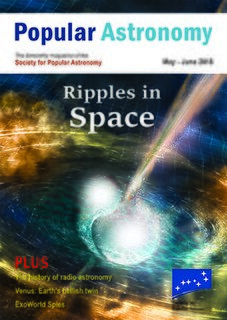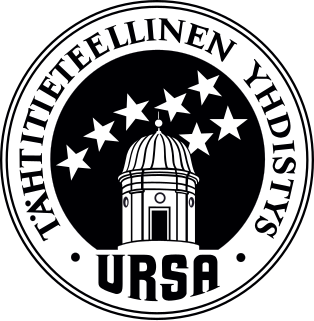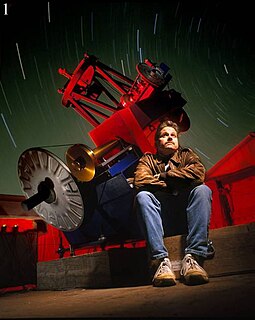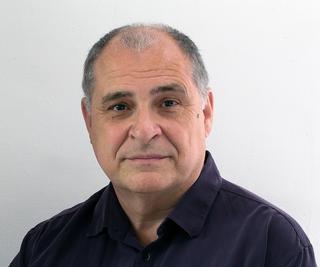
David Clifford Jewitt is a British-American astronomer who studies the Solar System, especially its minor bodies. He is based at the University of California, Los Angeles, where he is a Member of the Institute for Geophysics and Planetary Physics, the Director of the Institute for Planets and Exoplanets, Professor of Astronomy in the Department of Physics and Astronomy and Professor of Astronomy in the Department of Earth, Planetary and Space Sciences. He is best known for being the first person to discover a body beyond Pluto and Charon in the Kuiper belt.

The Haleakalā Observatory, also known as the Haleakalā High Altitude Observatory Site, is Hawaii's first astronomical research observatory. It is located on the island of Maui and is owned by the Institute for Astronomy of the University of Hawai'i, which operates some of the facilities on the site and leases portions to other organizations. Tenants include the Air Force Research Laboratory (AFRL) and the Las Cumbres Observatory Global Telescope Network (LCOGTN). At over 3,050 meters (10,010 ft) in altitude, the summit of Haleakalā is above one third of the Earths's troposphere and has excellent astronomical seeing conditions.
Terence Dickinson CM is a Canadian amateur astronomer and accomplished astrophotographer who lives near Yarker, Ontario, Canada. He is the author of 14 astronomy books for both adults and children. He is the founder and former editor of SkyNews magazine. Dickinson has been an astronomy commentator for Discovery Channel Canada and taught at St. Lawrence College. He has made appearances at such places as the Ontario Science Centre. In 1994, the International Astronomical Union committee on Minor Planet Nomenclature named asteroids 272 Dickinson and 5272 Dickinson in honour of his “ability to explain the universe in everyday language.”

Astronomy is a monthly American magazine about astronomy. Targeting amateur astronomers, it contains columns on sky viewing, reader-submitted astrophotographs, and articles on astronomy and astrophysics for general readers.

Popular Astronomy is the bi-monthly magazine of the UK's Society for Popular Astronomy, published in January, March, May, July, September and November.

Ian William Ridpath is an English science writer and broadcaster best known as a popularizer of astronomy and a biographer of constellation history. As a UFO sceptic, he investigated and explained the Rendlesham Forest Incident of December 1980.

Valdemar Axel Firsoff FRAS was known principally as an amateur astronomer. He was born on 29 January 1912 in Bila Tserkva, Russian Empire, and died on 19 November 1981. He lived in Lochearnhead, Scotland, before moving to Somerset, England, where he settled in Glastonbury.
Martin P. Mobberley is a British amateur astronomer, author, and former electronics engineer.

Nigel Henbest is a British astronomer, born in Manchester and educated in Northern Ireland and at Leicester University, where he studied physics, chemistry and astronomy. He did postgraduate research at the University of Cambridge before becoming a freelance science writer. He has written more than 40 books, many in collaboration with Heather Couper, and over 1,000 articles on astronomy and space which have been translated into 27 languages. Previously he has been Astronomy Consultant to New Scientist magazine, editor of the Journal of the British Astronomical Association and media consultant to the Royal Greenwich Observatory. Along with Couper and Stuart Carter, director of the Channel 4 series The Stars, he set up Pioneer Productions where he produced award-winning television programmes and series. Asteroid 3795 Nigel is named after him.
John "Jack" Borden Newton is a Canadian astronomer, best known for his publications and images in amateur astrophotography.

David John Eicher is an American editor, writer, and popularizer of astronomy and space. He has been editor-in-chief of Astronomy magazine since 2002. He is author, coauthor, or editor of 23 books on science and American history and is known for having founded a magazine on astronomical observing, Deep Sky Monthly, when he was a 15-year-old high school student.

Nicholas Szymanek, better known as Nik Szymanek, is a British amateur astronomer and prolific astrophotographer, based in Essex, England.

Ursa Astronomical Association is the largest astronomical association in Finland. Ursa was founded on 2 November 1921. Founding members include a renowned Finnish astronomer Yrjö Väisälä. In 1926 Ursa established the Ursa Observatory in Kaivopuisto district of Helsinki. In 2007 the Tähtikallio Observatory & Education Center was established in Artjärvi, its current equipment includes an Astrofox 36" Folded Newtonian Open tube telescope, an Alluna 16" Ritchey-Chrétien telescope, a Meade 16" LX200GPS Schmidt-Cassegrain telescope, a Sky-Watcher ED 120mm refractor telescope fitted with a Baader AstroSolar Solar Filter and a piggybacked Coronado SolarMax 40 H-Alpha telescope. Ursa's primary functions include advancing amateur astronomy and astronomical education. They have also published a magazine Tähdet ja avaruus since 1971. Anyone can join Ursa for an annual fee.

Puckett Observatory is a private astronomical observatory located in the state of Georgia. It is owned and operated by Tim Puckett. Its primary observation goals are the study of comets and the discovery of supernovae. To facilitate the latter goal it sponsors the Puckett Observatory World Supernova Search whose astronomers have discovered 369 supernovae.

Robert Gendler is an American physician, amateur astronomer, and astrophotographer.

Peter B. Lawrence is a British amateur astronomer best known for being a presenter on the BBC's The Sky at Night. He is also well known for his high resolution images of the Sun, Moon and planets and specialises in taking images of time-limited phenomena such as eclipses and the aurora.

Robert Jay GaBany is an American amateur astronomer and astrophotographer who is also known for his work with an international team of astrophysicists led by Dr. David Martínez-Delgado. GaBany helped pioneer the use of modest size telescopes and off the shelf CCD-cameras to produce long exposure images that revealed ancient galactic merger remnants in the form of star streams surrounding nearby galaxies that were previously undetected or suspected.

Astronomy Photographer of the Year is an annual astronomy photography competition and exhibition that is organised by the Royal Observatory, Greenwich.
Robert P. King, born August 9, 1953, is an American photographer, writer, and an amateur astronomer. He publishes an astronomy blog called Astro Bob which is "widely read and respected" according to astronomer Bob Mizon.














